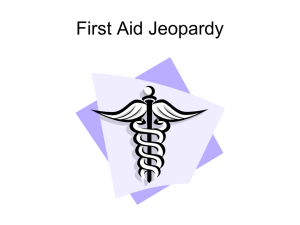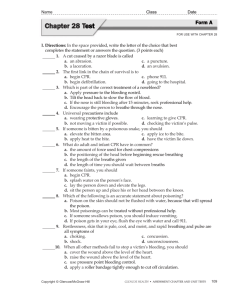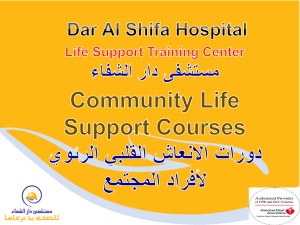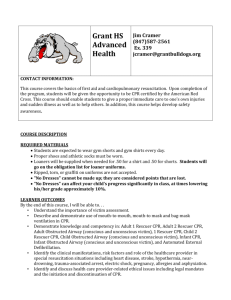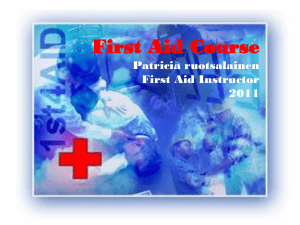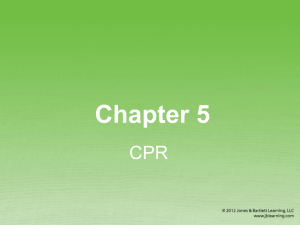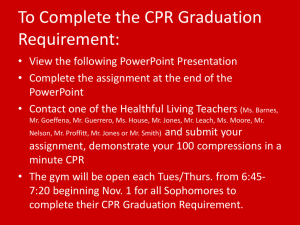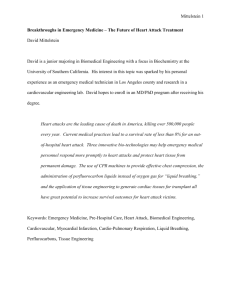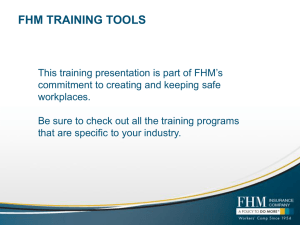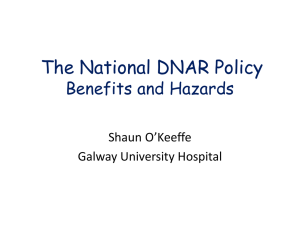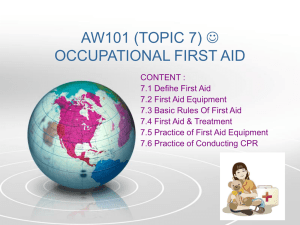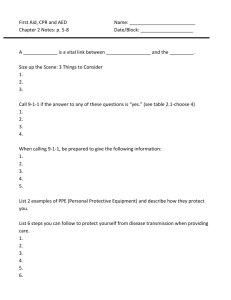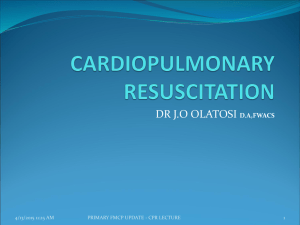Call First
advertisement
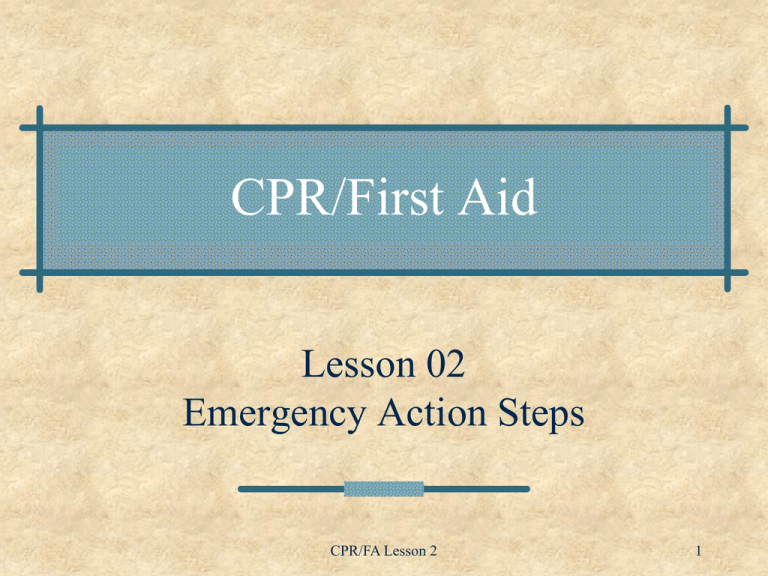
CPR/First Aid Lesson 02 Emergency Action Steps CPR/FA Lesson 2 1 Emergency Action Steps CHECK-the scene and the victim. CALL-911 /local emergency #. CARE- for the victim/victims. CPR/FA Lesson 2 2 Check Try to answer these questions before you can help: Is the scene safe to enter? What happened? How many people are injured? CPR/FA Lesson 2 3 Check (cont) Is there immediate danger? Can bystanders help? If dangers threatens, do not go near the victim. Stay at a safe distance and call 911/local emergency number. CPR/FA Lesson 2 4 Call The most important help that you can provide to a victim is to call professional medical help. Call the emergency number. Give the dispatcher the necessary info. Don’t hang up until the dispatcher hangs up. Return to the scene & provide care. CPR/FA Lesson 2 5 Call (cont) If you are the only person at the scene, shout for help. If no one arrives, you must decide whether to Call First, or Care First. CPR/FA Lesson 2 6 Call First or Care First In Call First situations you would call 911 before providing care. In Care First situations, you would provide care first, (about 2 minutes) and then call 911. CPR/FA Lesson 2 7 Call First Call First situations are likely to be cardiac emergencies, such as sudden cardiac arrest, where the time factor is critical. An unconscious adolescent or adult (age 12 years or older). A sudden collapse of a child/infant. An unconscious child/infant known to be at high risk for heart problems. CPR/FA Lesson 2 8 Care First Care First situations are likely to be non-cardiac emergencies, such as breathing emergencies or severe bleeding. When alone in these types of situations, provide care, (about 2 minutes) and then call 911. CPR/FA Lesson 2 9 Care First (cont) An unconscious victim less than 12 years old. Victim of submersion/near drowning. Victim of a possible drug overdose. In these situations, provide support for airway, breathing & circulation through rescue breathing or chest compressions as needed. CPR/FA Lesson 2 10 Care Introduce yourself; ask permission to help. Care for life-threatening emergencies before those that are not life-threatening. Watch for changes in the victim’s breathing & level of consciousness. Keep the victim from getting chilled or overheated. CPR/FA Lesson 2 11 Do No Further Harm One of the most dangerous threats to a seriously ill or injured person is unnecessary movement. Moving a person can cause additional pain or complicate his/her recovery. Generally, you should not move an ill/injured person while giving care. CPR/FA Lesson 2 12 Do No Further Harm (cont) The following are situations where moving a victim is appropriate: When faced with immediate danger. When you have to get to another person who may have a more serious problem. When it is necessary to give proper care. CPR/FA Lesson 2 13 Do No Further Harm (cont) Once you decide to move an ill/injured person, you must quickly decide how to do so. Base your decision on: Dangers you are facing. The size & condition of the victim. Your abilities and condition. Whether you have any help. CPR/FA Lesson 2 14 Moving a Victim To move an injured person without injuring yourself or causing them further harm— Use your legs, not your back when you bend. Walk forward, taking small steps. (Look where you are going.) Avoid twisting/moving a victim with a possible, head/neck/back injury. CPR/FA Lesson 2 15

